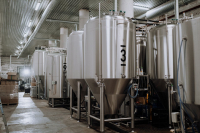Adaptive control system for complex tasks
One of the standout features of the MABI Robotic Arm is its adaptive control system. This technology allows the robot to automatically adjust its movements based on real-time feedback, ensuring accuracy even in changing environments. This is particularly useful in metalworking processes such as welding and cutting, where conditions can vary, and precision is crucial.
The adaptive system uses a combination of sensors and algorithms to detect changes in force, position, and speed. This enables the robotic arm to maintain consistent quality across different tasks. The automatic adjustment of parameters ensures that the MABI Robotic Arm can handle complex tasks with higher efficiency compared to traditional robotic arms, which often require manual recalibration.
Flexible programming with graphical interface
The MABI Robotic Arm features a user-friendly graphical interface that simplifies programming. Instead of relying solely on traditional coding methods, operators can easily set up tasks using visual tools. This makes the robot accessible to operators without advanced programming skills, reducing setup time and training costs.
The interface also supports drag-and-drop functionality, allowing users to quickly create complex motion sequences. This is especially beneficial in industries that require frequent changes in production tasks, such as electronics or custom manufacturing. The flexibility of programming gives the MABI Robotic Arm an edge over competitors by offering easier integration and faster deployment in various industrial settings.
Collaborative operation with safety features
Safety is a critical aspect of robotics, especially when robots are working alongside human operators. The MABI Robotic Arm incorporates advanced safety features, including force sensors and emergency stop mechanisms, to enable safe collaboration. These features ensure that the robotic arm can detect collisions or unexpected forces and immediately halt operations to prevent accidents.








